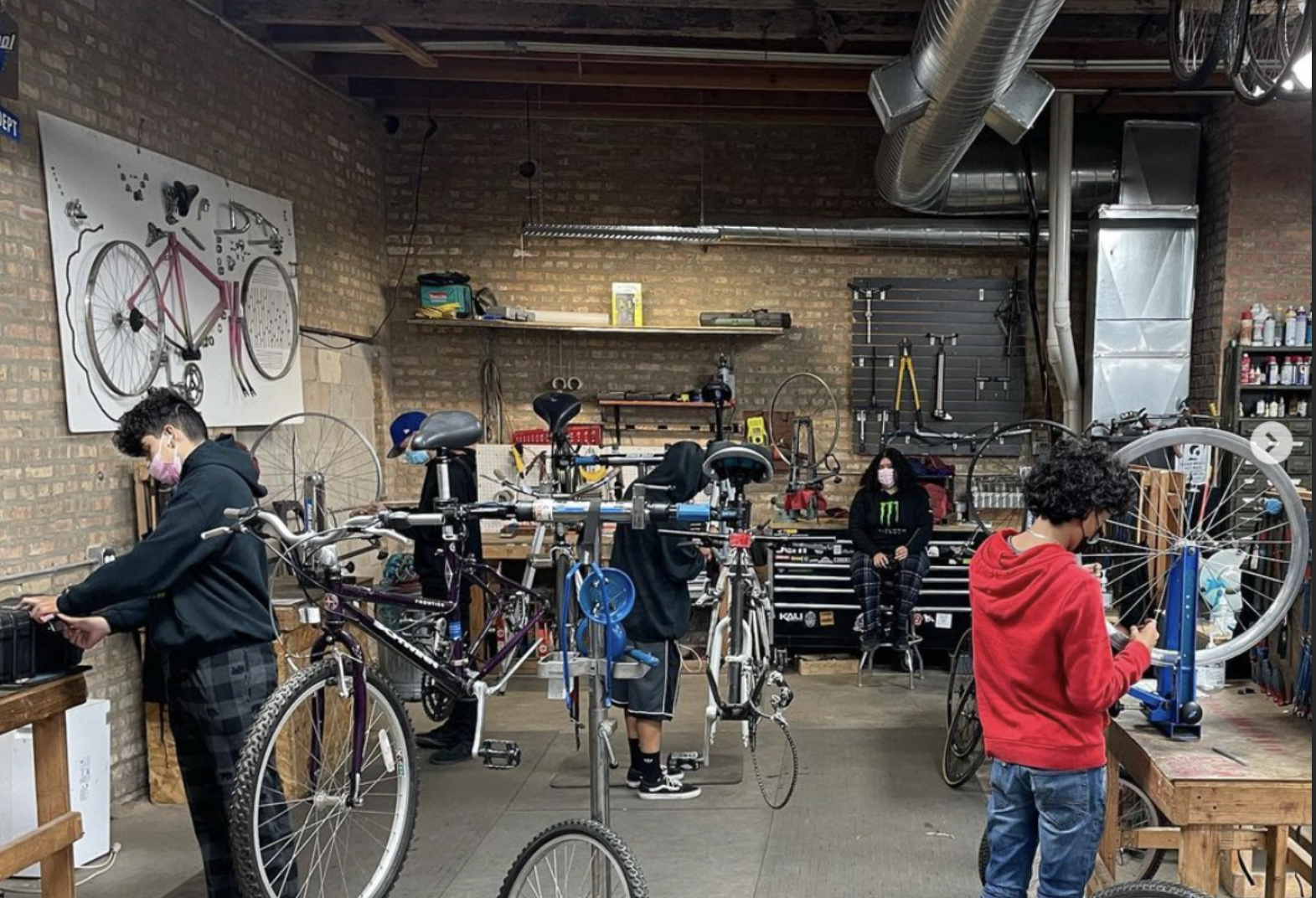Proposed Pace strategic plan puts emphasis on express buses, ridership metrics
12:41 PM CDT on July 14, 2021
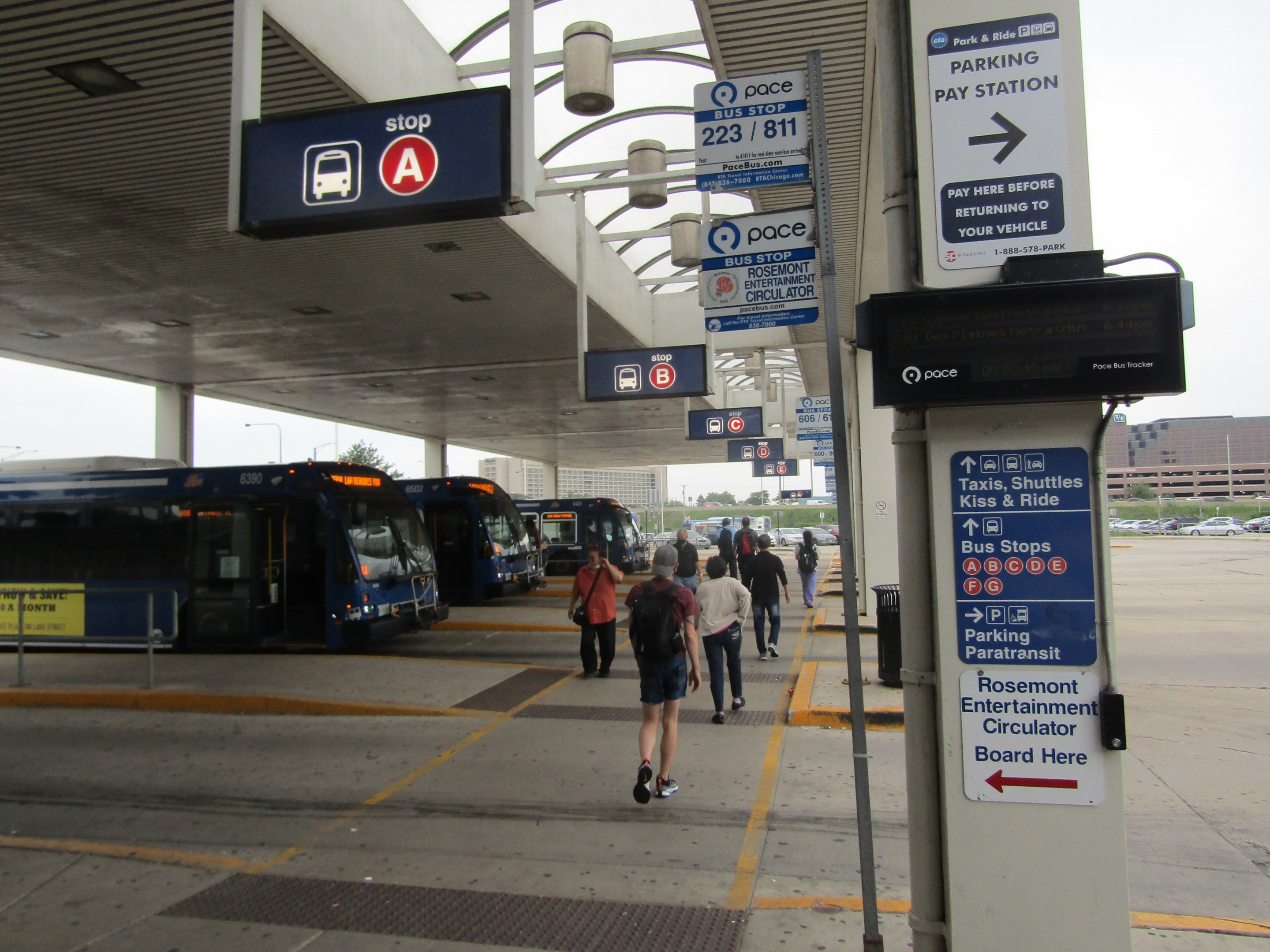
Riders head toward I-90 express buses in Rosemont. Pace is considering doing something along the similar line on Edens Expressway and Tri-State Tollway. Photo: Igor Studenkov
The vision of Pace’s future outlined in its proposed new strategic vision plan emphasizes express services along highways and Pulse Arterial Rapid Transit services along major corridors, while promising a potential reshuffle of the local routes.
The Driving Innovation plan, which was released on June 24, will set Pace’s priorities for the next 10 years. It was originally supposed to be released last year, but Pace wound up delaying it and updating it in response to the pandemic.
The recurring theme throughout the plan is flexibility, with several sections describing it as a “living document” that would change if circumstances required. But the plan also reflected many pre-pandemic priorities – increasing and speeding up service along major highways, adding more Pulse routes along major corridors and improving intermodal connections with Metra and CTA. The plan also outlines the procedure for service changes, and calls for a region-wide study to get a better handle on where the service is needed.
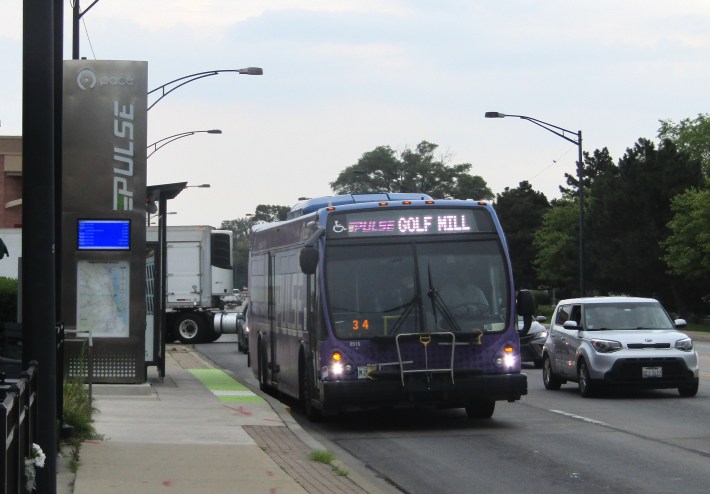
The plan is currently available on Pace’s website for public review. Residents have until August 20 to submit comments. The Pace Board of Directors is expected to adopt the final version of the plan sometime this fall.
The release of the plan comes as Pace is considering reversing some of the service suspensions and reductions it implemented in the early months of the pandemic. The transit agency plans to announce the details by August, and it may consider reversing some of the other changes further down the line.
Route Metrics and Service Changes
In spring 2020, Pace suspended 73 routes and reduced service on 25 others. Most of the suspended routes were either commuter-orientated services or local routes with low ridership. The plan mentions that Pace may restore some of the reduced service depending on demand, but it’s silent of the suspended routes.
Pace spokesperson Maggie Daly Skogsbakken said that those routes will be treated the similar way, adding that “This August, a number of suspended and reduced services will be restored.” She said she couldn’t elaborate further by press time, but she indicated that commuter shuttles such as “Shuttle Bug” routes serving suburban workplaces along Northbrook’s Lake Cook Road corridor “are not the focus of August’s service changes.”
The plan calls for Pace to do a in a system-wide market analysis “to understand both local and regional dynamics that influence where transit users across the system are coming from and needing to go.” Daly Skogsbakken said that the analysis will include a rider outreach component, and that the results will help guide which services would get restored further down the line.
The plan would set up a new process for launching new routes and making changes to the existing ones. Each route will be evaluated based on walkability, job density, and the number of low-income residents and transit connections within a quarter-mile radius of each stop. It would also look at route characteristics such as the distance between stops, bus service frequencies during rush hour, hours of operation, the type of vehicles the route uses, the amenities the bus stops have, on-time performance, how crowded the buses get, how many passengers the route serves per hour, farebox recovery, general customer experience, the ability to transfer to other routes, and “route directness” – how much a route follows a particular corridor. If the numbers declined, the routes may be adjusted or, if the numbers get low enough, potentially eliminated altogether.
The new routes would go through a trial period where they would be evaluated according to the above criteria and, if necessarily, adjusted.
Before the pandemic, Pace planned a major service restructuring for its north suburban routes as part of the North Shore Transit Service Coordination Plan. The pandemic suspended those plans, and Daly Skogsbakeen said that they will stay suspended until further notice.
“As Pace focuses on our post-pandemic service restoration and planning efforts, Phase 2 of the North Shore Transit Service Coordination Plan remains on hold,” she said.
Infrastructure
The plan calls for Pace to continue investing in Compressed Natural Gas buses, while also taking steps toward gradually switching its bus fleet to battery electric buses. Up until now, the closest the Pace ever got to electric powered buses was a diesel-electric pilot in Highland Park. The transit agency pivoted toward CNG buses because they were cheaper. Now, Pace plans to study what kind of infrastructure it would need to get the electric buses up and running. The planned new Northwest Division garage in Wheeling that would be able to fuel CNG buses, allowing Pace to expand the technology outside the south suburbs.
To encourage more pedestrian-friendly and accessible conditions around the bus stops, Pace plans to develop Transit Supportive Guidelines, which would include recommendations for sidewalk design and maintenance, amenities for pedestrians, cyclists and transit riders, setting up priority lanes for buses, installing traffic-calming measures and improving intersection designs. The guidelines will be coordinated with the Illinois Department of Transportation's Complete Streets policy.
Pace is also planning to add more real-time arrival information displays to major transit hubs and less prominent stations. It will also be working to expand transit signal priority technology, which automatically extends the green light for the buses approaching the intersection, to around 300 intersections, mostly along the near-term and longer-term Pulse lines.
Capital Projects
For the past decade, Pace has been working with IDOT and the Illinois Tollway Authority ] to speed up express service to downtown along I-55/Stevenson Expressway, and reverse commuter service along I-90/Jane Addams Memorial Tollway and I-94/Edens Expressway. The plan calls for Pace to study whether there is a demand for further service improvements along I-55 and I-94. With I-55, it will look into building a new station at the spot where the highway passes under Harlem Avenue to provide transfers to the existing Route 307 and the future Harlem Pulse route.
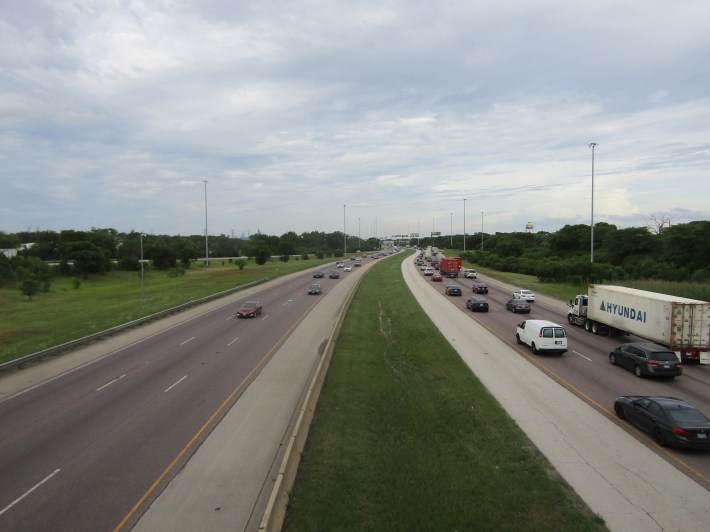
The station would be similar to the I-90/Barrington Road park-n-ride, where buses stop on at the platforms along the highway’s outer lanes. While that part of I-55 is wider than I-90, it has an unused median with enough room for two lanes and a platform.
To accommodate the potential service increases, Pace plans to build a new, larger garage in Plainfield and expand the existing garage in Evanston. The River Division garage in Elgin will be expanded to accommodate the express buses that currently serve I-90.
Pace also plans to study adding service along I-290/Eisenhower Expressway., which hasn't had any Pace service since routes 757 and 895 were suspended due to the pandemic.
As IDOT rebuilds portions of Tri-State Tollway between Balmoral Avenue and 95th Street, it will add flex lanes, similar to what it did on I-90, which would allow certain lanes to become bus-only depending on traffic conditions
As Illinois Tollway rebuilds portions of Tri-State Tollway between Balmoral Avenue and 95th Street, it will add flex lanes, similar to what it did on I-90, which would allow certain lanes to become bus-only depending on traffic conditions.
Only routes 395 and 890, which serve shift workers at UPS' Hodgkins facillity, currently use the tollway, and they only use a small portion of it. All three Pace commuter express routes that used the Tri-State Tollway before the pandemic are currently suspended. But Pace and RTA are currently studying potential transportation markets along the corridor, as well as the possibility of building new park-and-ride facilities and stations.
Daly Skogbakken said that Pace is still evaluating whether the restore the three routes, saying that the decisions will be based on demand and the study results. “If service on affected routes serving the I-290 corridor is not restored as part of our present post-pandemic restoration process, we will certainly look at those markets as part of the [Tri-State tollway study],” she said.
Pace is also working with Metra on improvements to two intermodal transit facilities – the Harvey Transportation Center and Joliet Gateway Center. The Harvey Transportation Center, Pace’s largest transit hub in south suburbs, is located across the street from Metra Electric District Line’s Harvey station. Pace and Metra plan to redesign their respective facilities to “better facilitate transfers,” though not details have been released.
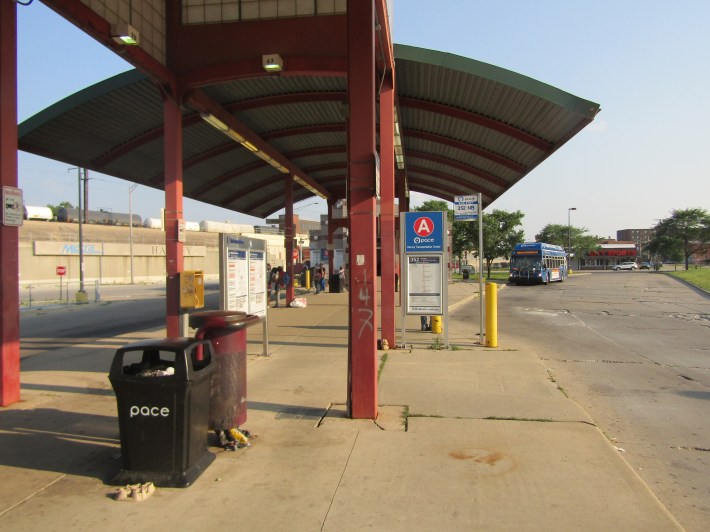
Joliet used to have a fairly convenient Pace/Metra transfer, with buses stopping in front of the the historic Joliet Union Station at the northwest corner of the Rock Island District/Heritage Corridor line intersection, But in 2014, the the passenger service was moved to a new facility at the northeast corner of the crossing, and the bus routes were moved away from the Union Station. Pace and Metra are planning to build new bus terminal on the southwest side of the crossing, moving buses closer to the station..
Stay in touch
Sign up for our free newsletter
More from Streetsblog Chicago
It’s electric! New Divvy stations will be able to charge docked e-bikes, scooters when they’re connected to the power grid
The new stations are supposed to be easier to use and more environmentally friendly than old-school stations.
Communities United: Reports of Bikes N’ Roses’ death have been greatly exaggerated
According to the nonprofit shop's parent organization, BNR has paused its retail component, but is still doing after-school programming and looking for new staff.



